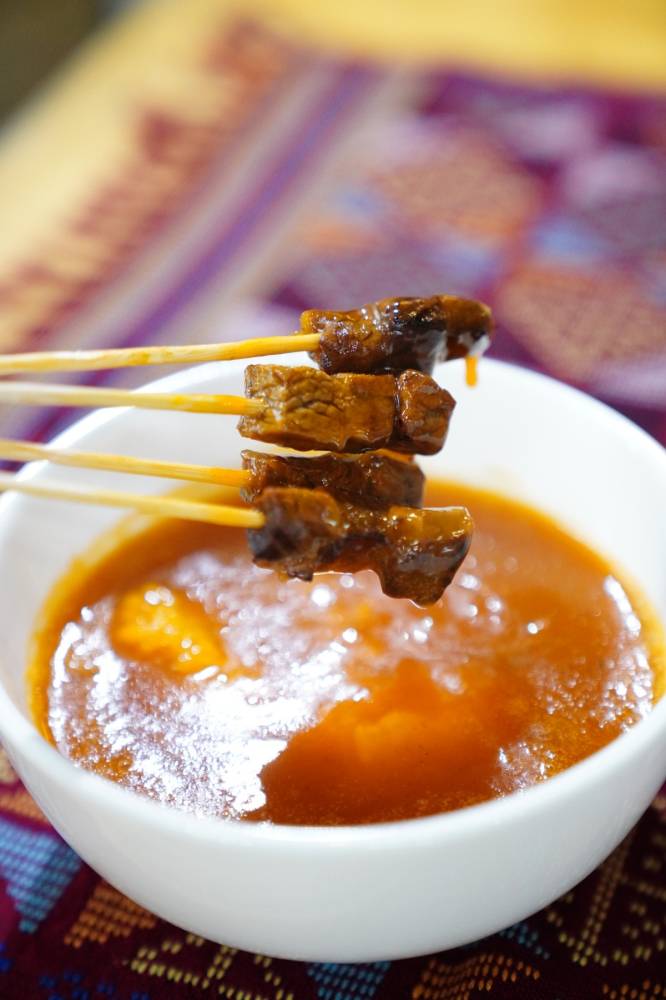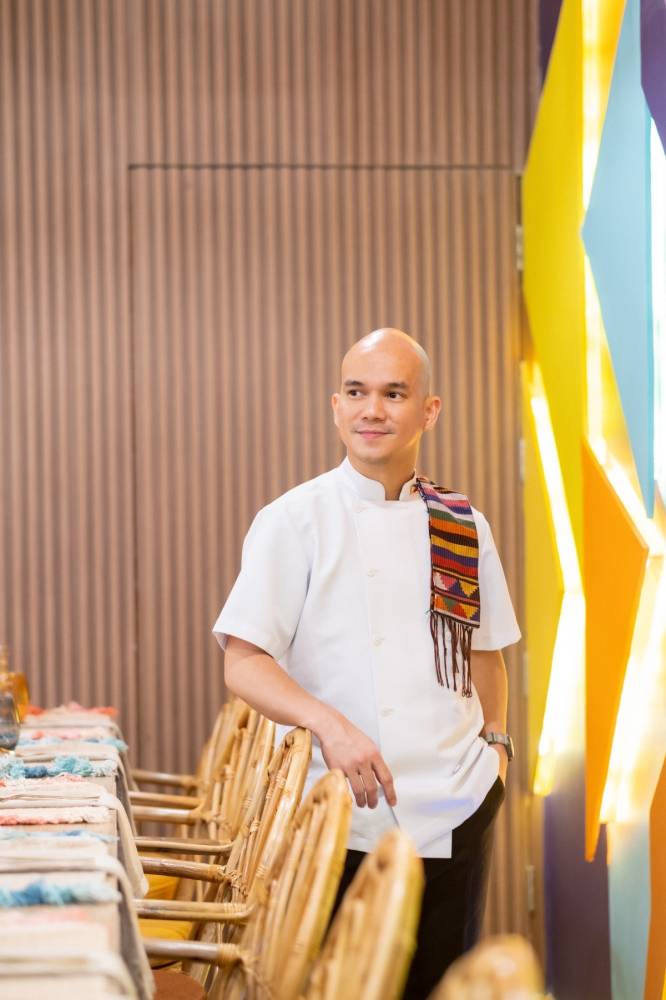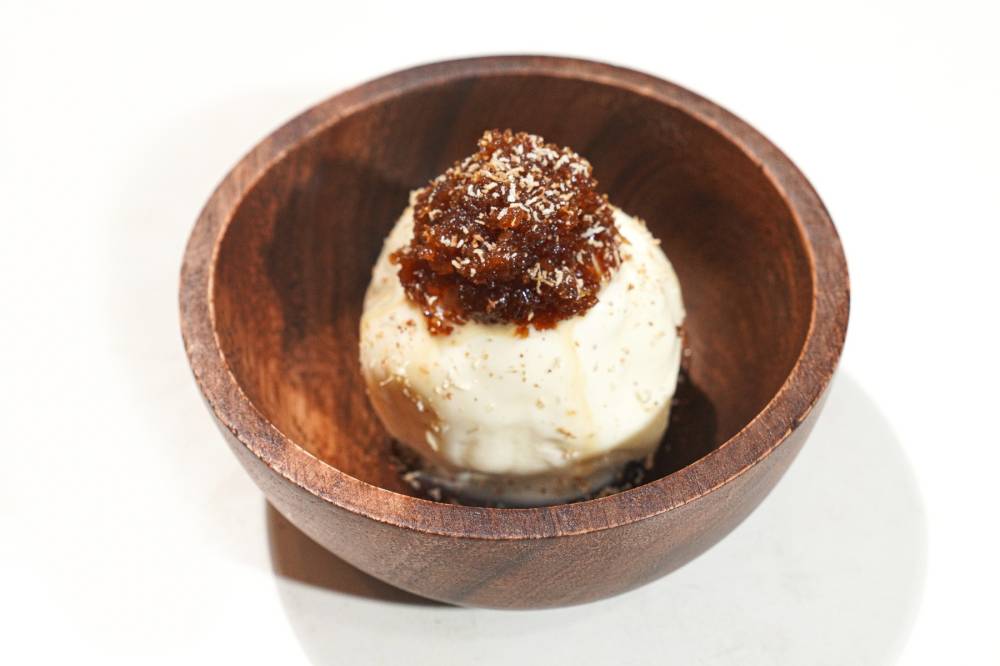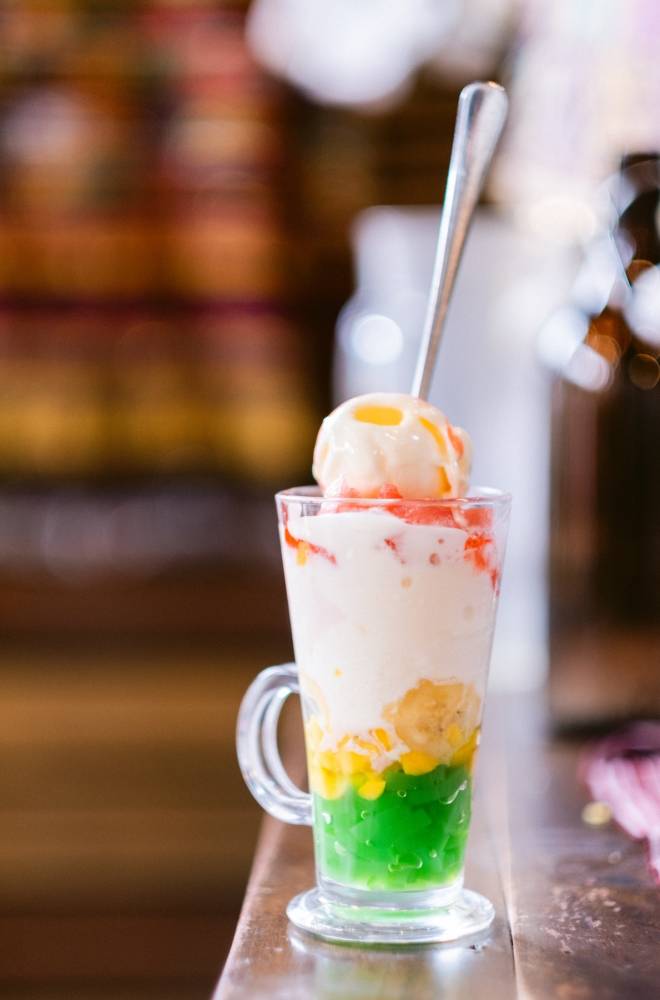A chef’s quest to bring Mindanao’s unexplored flavors to Manila

As chef Miggy Moreno celebrates his birthday week, it is befitting that we celebrate him, in gratitude for bringing the cuisine of his beloved Mindanao to light.
On a fine Sunday night, I dined with the Jolo-born, Zamboanga-raised lad at his Palm Grill Restaurant on Tomas Morato in Quezon City. As I stepped in, I knew that my tastebuds were in for a most delightful journey.
Mindanao, the land of promise, is diverse, rich and colorful. The food is alive, vibrant and so unique to itself.
Moreno’s (@aldomiggy on Instagram) mission through food, through his restaurants, is to change the narrative and the preconceived notions people have of Mindanao.
“I would like our food to be seen as truly Filipino,” he said.
And rightfully so. As Mindanao was never fully colonized, it has managed to preserve their cuisine’s authenticity.
While colonizers came to take away, the sultanate of Sulu had healthy relations with their neighbors, exchanging culture and trading spices peacefully. This is why the cuisine of Sulu and its neighboring islands have a shared taste profile with Sabah in Malaysia, Indonesia and other Southeast Asian countries.

Women in his life
The women in Moreno’s life, grandmother Oswalda Alcantara Cabel, and his mother Melissa influenced him greatly. It was his love for their food that stirred a yearning in him to cook.
His grandmother was an educator, politician and historian whose legacy was the Sulu Museum and Library, which she later handed over to the National Museum.
His grandfather. Dr. Heracleo Lopez Cabel, was born in Ilocos Norte. In the late 1940s, he was tasked to establish the Sulu General Hospital, where he served as its chief. Years after, Moreno’s lolo, along with his peers, set up their own medical institution, the Sulu Doctors Hospital.
Having prominent grandparents meant a house always bustling with activity. With fondness, he looked back on a time when their ancestral home in Jolo was so festive and when the food flowed to serve guests from both near and far.
Moreno, who started cooking at the tender age of 8, gave credit to his mother for teaching him various cooking techniques and for sharing her cooking secrets with him.
He first ventured into selling his creations while he was in high school at the Ateneo de Zamboanga. His Piyanggan Manuk booth was a blockbuster at the yearly Ateneo fiesta. Others tried to replicate it but weren’t as successful.

Unfamiliar
The moments with the women in his life, and at the Ateneo, paved the way for Palm Grill Restaurant, now two branches strong and on its eighth year of operations. Not a small feat for an eatery that serves regional cuisine.
The chef admitted that it was a challenge to present his unexplored and unfamiliar food to Manileños. He intimated how customers would walk in, then step out after going through the menu.
Well aware that his work is not done, and that there remains much to do to acquaint more palates to his native fare, he is grateful for the years he managed to remain afloat, even through a pandemic.
I was so enthralled by his tales, more so by how proud he is of his roots.
While we were lost in conversation, we were interrupted by the arrival of a plate full of freshly made pastil, half-moon pastries of the Tausugs filled with mung bean sprouts, served with cooked vinegar, that was divine! The vinegar tasted like broth.I learned that night that vinegar is most often boiled before it is used as a sauce or as an additive to food.
Then came sati. It is a breakfast dish enjoyed widely in Zamboanga, but which originated in Sulu. A thick soup that is both sweet and spicy—made with tomatoes, peanuts and spices—it contains balls of sticky rice, traditionally called tamu, and served with skewers of beef or chicken

‘Dulang’
Then came the star of the feast, the dulang, a lavish celebratory tray of the Tausugs that highlighted little portions of their specialty dishes, from savory to sweet.
The dulang can be as elaborate as one’s imagination can fathom. At the center of it was tiyula itum, the spicy tinged beef soup with burnt coconut (pamapa itum) and lemongrass akin to a smoky, citrusy bulalo. Its flavors are full, deep and bright. It comes with a whole baked bone marrow that is torched before your eyes.
Other dishes on the tray were delicious pyanggang manuk (chicken slow-cooked in coconut milk, burnt coconut and spices), delectable beef kurma, (savory beef with potato curry of the Tausug), kaliya puso (banana heart stewed slowly with coconut milk and pamapa, a blend of spices), beef piassak (beef sirloin and liver slow-cooked in coconut milk and burnt coconut meat), and turmeric rice. All dulang have hard-boiled eggs as they symbolize fertility and prosperity. Moreno made his own version with Mindanao-style Scotch eggs.
We also had a taste of pompano slathered with sambal made with ripe tomatoes, garlic, onions, ginger and turmeric. It is a popular preparation from Tawi-Tawi influenced by Indonesia and as far as Thailand.

Locon—a dish of wild-caught prawns with his rendition of the Alavar sauce—was tasty.
Palm Grill’s ensaladang talong remains one of the best renditions I’ve tried, made with grilled eggplants, with tomatoes tossed in cooked vinegar, the Mindanao way.
For dessert, there was Zamboanga’s famous Knickerbocker, a halo-halo without shaved ice—fresh fruits originally capped with strawberry ice cream. At Palm Grill, it is served with vanilla ice cream and drizzled with strawberry syrup.
I had my first taste of hinti over a scoop of vanilla ice cream. Hinti is a Tausug version of a sweetmeat grated coconut cooked in brown sugar.
And to cap our meal was palikambing (banana fritters), a kind of bang bang sug (Tausug native cake). I was amazed that different kinds of bang bang sug are traditionally had with Sulu coffee before meals, though they’re also had for merienda.
My evening at Palm Grill was one to remember. I walked out satisfied, more knowledgeable and even prouder to be Filipino.
Follow the author @iamreggieaspiras on Instagram and Facebook; reggieaspiras.com


















